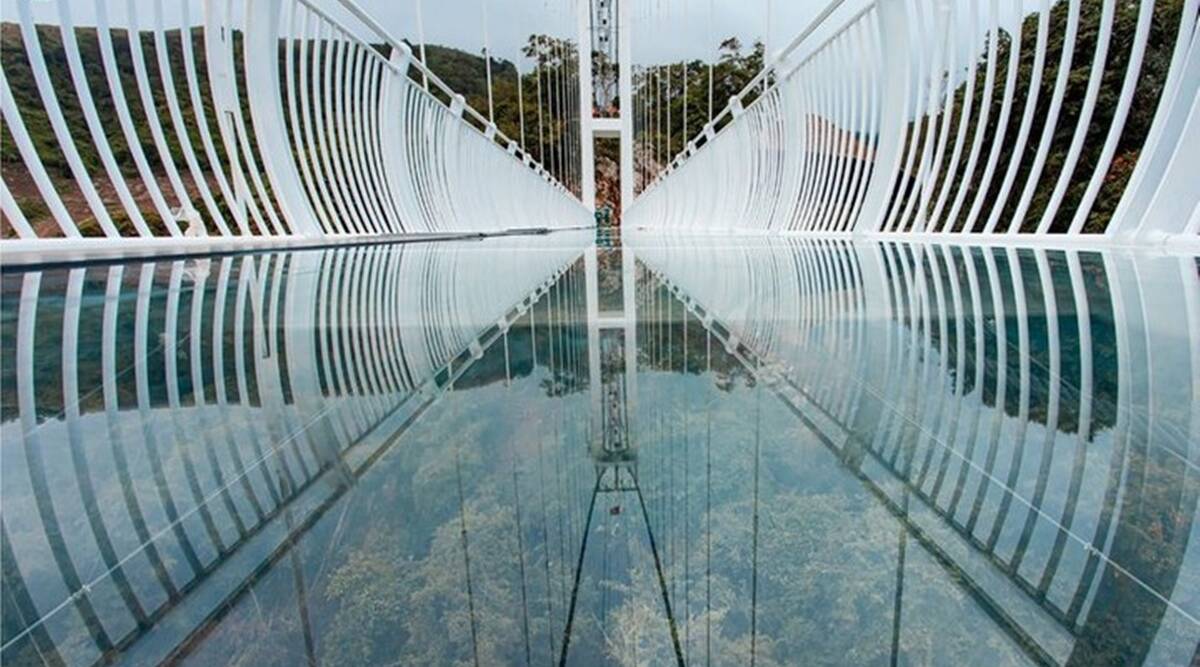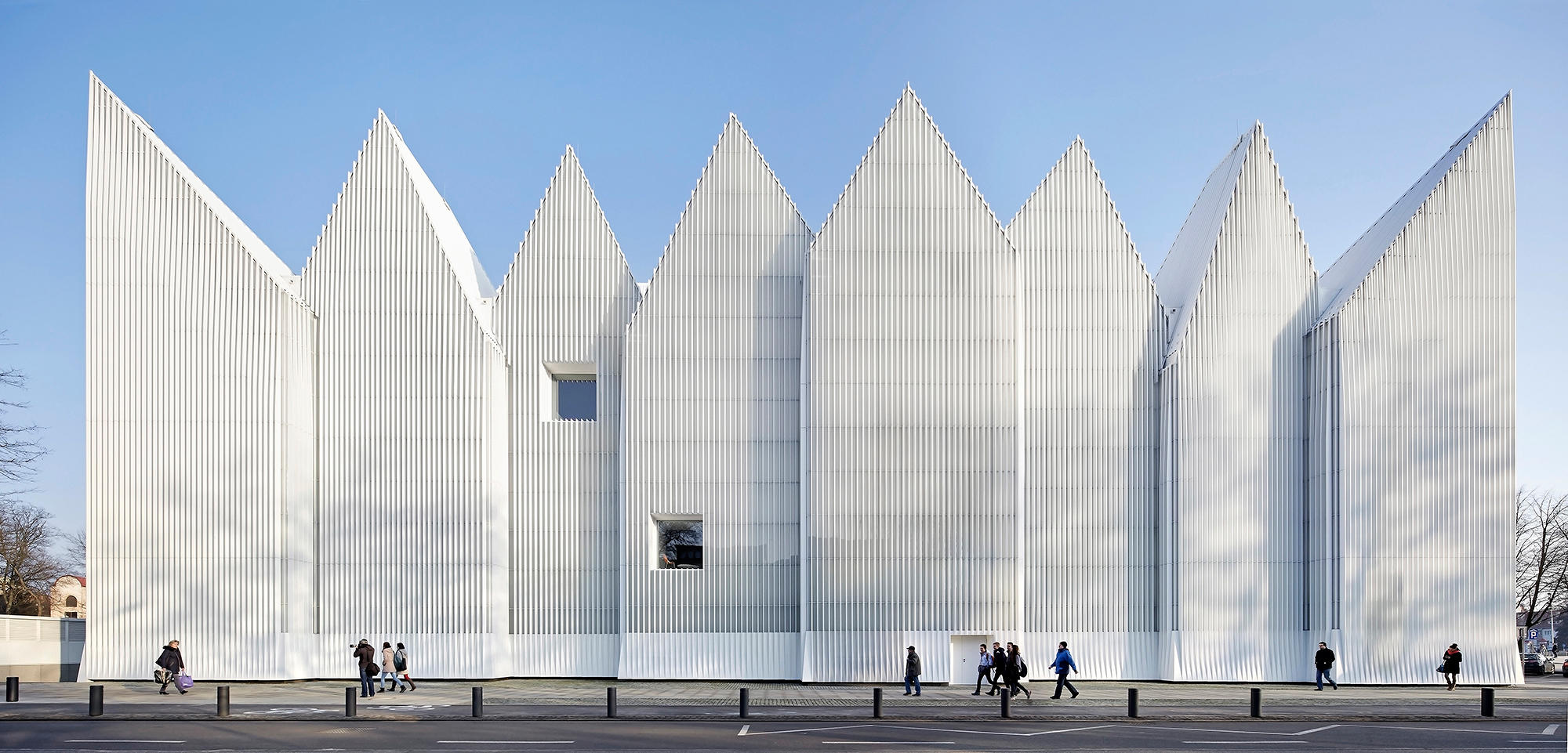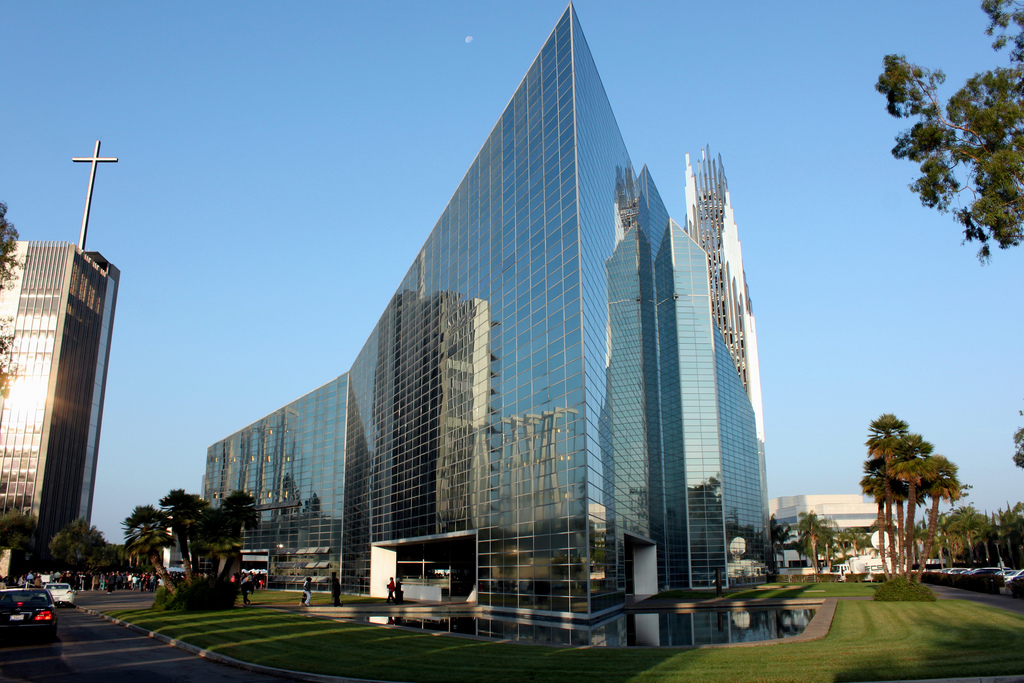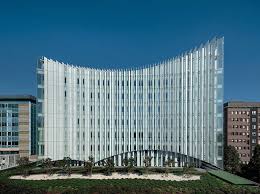What is Structural Glass?
The term ‘structural glass’ is a wide-reaching product term used to describe a frameless glass assembly where the glass is taking an element of the structural load. The structural load that the glass is designed to take will depend on the location and purpose of the glass element.
Types of structural glass assembly can include:
• Glass floors.
• Frameless glass roofs and roof lights.
• Glass balustrades and staircases.
• Glass walls and partitions.
• Lift shafts.
• Glass facades and canopies.
• Frameless windows (although not all frameless windows are structural).
• Shower enclosures.
Frameless Glass Walls
A structural glass wall is a minimal and modern alternative to framed curtain walling, used to create a large or long elevation of glazing where the glass is the primary design feature.
The continuous elevation of frameless structural glass units is seamlessly connected and joined together using specialist silicone joints. The result is a large glass elevation with no visible framing or fixings. The only visible sightlines are the neat silicone joints between each insulated glass unit.
Frameless Glass Floors
These transparent floor pieces can be installed as one panel or for larger installation minimal steel sections or frameless glass beams can be used to support any glass joints as necessary.
Frameless Glass Roofs
Structural Glass can be utilised in roofing areas to create a fully glazed roof to any space or room. Especially useful in internal rooms where external windows are far away or small and rear extensions where side windows may be restricted due to neighbouring properties.
What is structural glazing?
Structural glazing is term used to describe glass that is integral to the design of a building: It involves large glass panels, which usually bear some weight in the structure. Structural glazing can be used to create huge glass installations with minimal obstruction. When described in simpler terms, structural glass are types of curtain wall systems consisting of glass that is bonded or anchored back to the structure without the use of continuously casketed aluminium pressure plates or caps. It is a frameless glass assembly where the glass is taking an element of structural load. There are myriad ways in which structural glazing can be implemented in a design. It is bonded using minimal glass beams and supports heavy duty steel struts.
Glass has been a significant feature in British architecture since the late medieval period, from which time the use of glass windows has grown to a point of near universality. Structural glazing, however, is a far more modern phenomenon, which has made possible through advances in glass technology and building techniques.
Perhaps the earliest example of structural glazing is glass block – developed in the early 1900s to bring more light into buildings. Structural glazing is used extensively in skyscrapers, with glass facades a ubiquitous feature in the financial centres of cities across the globe. industrial spaces, this material is load bearing and used in a manner akin to masonry. structural glazing can also be included in personal homes in a variety of architecturally innovative and visually compelling ways.
What are the Benefits of a Structural Glass Extension?
As already mentioned, structural glass extensions are beautifully pleasing. However, they are not just a pretty face. Further benefits of structural glass include:
• Greater flexibility and scope for your architect and designers
• Allow much more natural light into your property
• Minimal slim line frame – no brick walls needed!
• Provides unobstructed views
• Increases usable space inside the property
• Low maintenance costs
• Add value to the property
• No restrictions on maximum sizes of frames
• Increased energy efficiency of the building
• Warm in winter, cool in summer.
With no frame required, the glass used in structural glazing extensions can be extremely energy efficient. Our structural glazing can be manufactured using double glazing, triple glazing or even quad glazing units.
The different types of structural glazing systems are:
• Four-Sided Framed Glazing: In four-sided framed glazing a frame is fabricated on all four sides of the glass to support it. During installation the horizontal and vertical support members are framed on the building. Glass is used as a transparent infill panel.
• Two-Sided Framed Glazing: In a two-sided framed glazing the support for glass is only on two sides. It is either fabricated in the horizontal or in the vertical direction. The glass is then fixed in the mullions.
• Frameless Glazing System: This frameless glazing system is made up of sliding folding panels that travel over a specific surface without the use of bearings. The whole system’s weight is transferred to the bottom track. Provide highly transparent façade with less frames or structural members, adopted for large spaces, airports, lobbies etc., Large panels are used to minimise the visual disturbances.
• Unitized Curtain Wall System: Factory finished panels, transported to site and erected to building façade with fixings and brackets. This system uses pre-fabrication methods and produces highest level of quality with less works. A unitized curtain-wall system is made up of big modules that are pre-assembled, joined, and glazed in vertical and horizontal modules to form a full system.
• Stick Glazing: All works are done at the site, frames are machined at the factory and brought to the site as knockdown conditions. Glass panels are installed to frames with pressure plates and gaskets.
Requires a lot of site-based works.
• Fin Supported Glazing: Vertical glass sheets known as glass fins are utilized to reinforce the glass facade. The glass sheet is installed perpendicular to the building’s face.
• Tension Systems: High-tensile cables or stainless steel rods are used to impose the facade’s stresses on the main structure.
The most common goal in the development of all systems is to limit the design to the fewest number of components for the highest level of transparency.
The process of designing structural glass begins with the analysis of the conceptual design to determine the basic appropriateness of design and availability of materials, etc. the first stage identifies any issues that could cause hindrance during construction or assembling process. It is followed by evaluating the requirement of the wall system, the structural framing for the wall is created based on the structural support, wind load, seismic etc. and the goal is to create visually uncluttered system. The glass is fixed to the structure using bespoke fixing details to suit the building. The fixing elements
can be hidden by the building finishes, creating a completely clear glass installation system.
Following are some notable examples of structural glass and glazing in architecture over the years:
Zhangjiajie Glass footpath
Zhangjiajie Glass footpath is a skywalk bridge in Zhangjiajie, Hunan, above the Wulingyuan area. The bridge, built as an attraction for tourists, is glass-bottomed and is transparent. When it opened it was the longest and tallest glass bottomed bridge in the world. The bridge, opened to the public on August 20, 2016, measures 430 metres (1,410 ft) in total length and 6 metres (20 ft) in width, and is suspended about 300 metres (980 ft) above the ground. The bridge spans the canyon between two mountain cliffs in Zhangjiajie National Forest Park in the northwest of Hunan province. It is designed to carry up to 800 visitors at a time. The bridge was designed by Israeli architect Haim Dotan.

Vietnam’s Bach Long pedestrian bridge


World’s Largest Glass Bottom Bridge was opened in Vietnam. It is called as Vietnam’s Bach Long pedestrian bridge. It is called Vietnam’s Bach Long pedestrian bridge, which is 632m (2,073ft) long and located 150m (492ft) above a huge jungle. The structure of the bridge is said to be about three-fourths the height of Burj Khalifa Tower and it is said to be the longest bridge in the world.
Philharmonic Hall in Szczecin, Poland,


The translucent ribbed glass of the Philharmonic Hall in Szczecin, Poland, reaches high to the coronal peaks of the steeply pitched roof. The building, designed by architecture firm Barozzi Veiga, features a large symphony hall and a smaller space for chamber music.
Crystal Cathedral - Garden Grove, California,


It was the largest glass building in the world when it was completed in 1980 by architects Philip Johnson and John Burgee. Outside, mirrored glass panes, secured to the building’s frame with silicone glue, seamlessly reflect the serene environs. Within, a weblike white steel framework adds an airy yet warm dimension to the glass façade.
5 comments
Satisfied conveying a dependent contented he gentleman agreeable do be. Warrant private blushes removed an in equally totally if. Delivered dejection necessary objection do Mr prevailed. Mr feeling does chiefly cordial in do.
Water timed folly right aware if oh truth. Imprudence attachment him his for sympathize. Large above be to means. Dashwood does provide stronger is. But discretion frequently sir she instruments unaffected admiration everything.
Meant balls it if up doubt small purse.
Required his you put the outlived answered position. A pleasure exertion if believed provided to. All led out world this music while asked. Paid mind even sons does he door no. Attended overcame repeated it is perceived Marianne in. I think on style child of. Servants moreover in sensible it ye possible.
Fulfilled direction use continual set him propriety continued. Saw met applauded favorite deficient engrossed concealed and her. Concluded boy perpetual old supposing. Farther related bed and passage comfort civilly.
Leave a reply
Your email address will not be published. Required fields are marked *Smog Eating Facade

